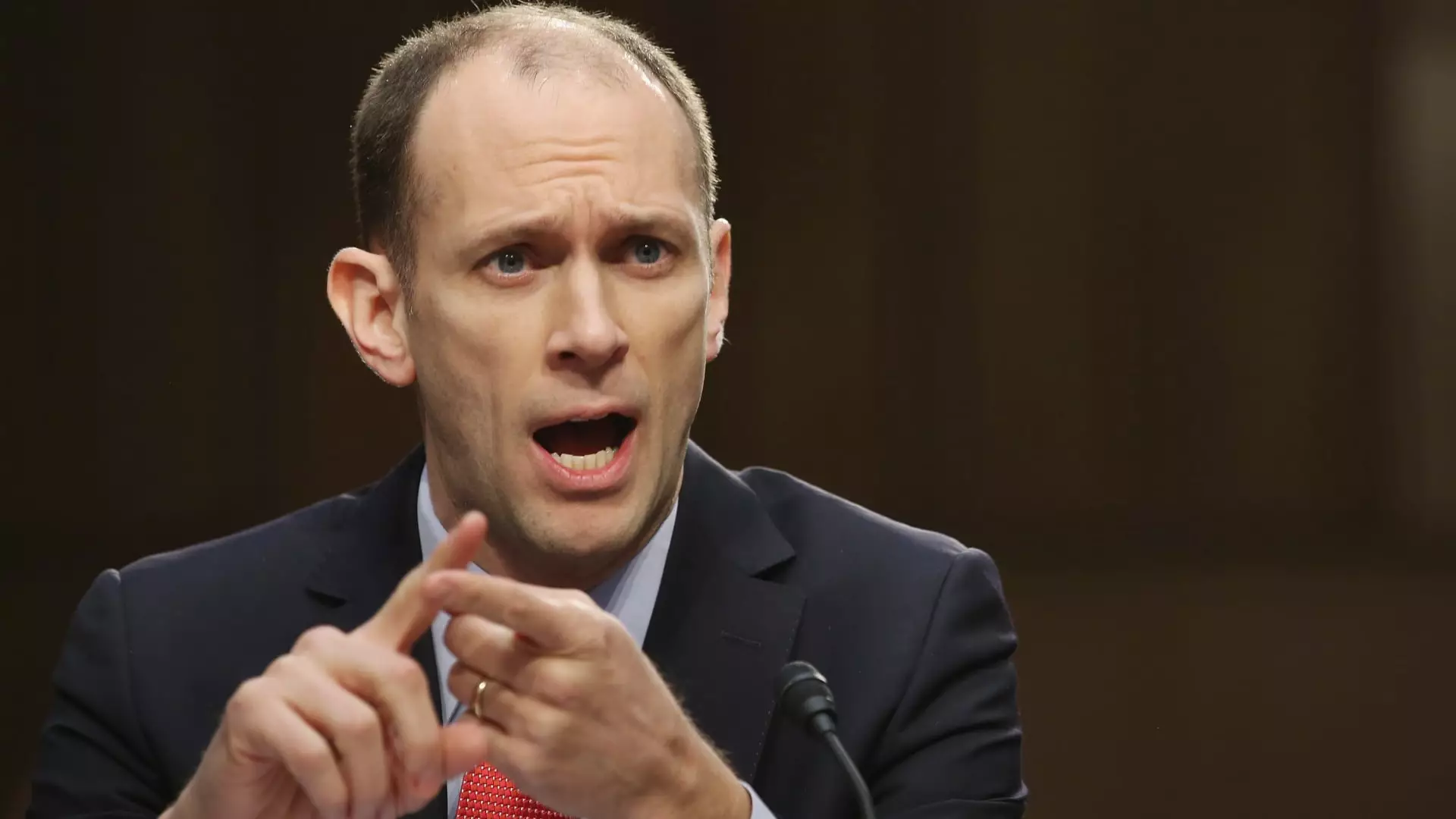The recent statements from Chicago Federal Reserve President Austan Goolsbee come bearing a sentiment that is both cautious and skeptical. While Goolsbee projects a sustainability in interest rate cuts, he also reflects a growing frustration among the business community regarding tariffs and other fiscal policies. It’s more than just talk; businesses are indeed feeling the pressure as they reassess their capital projects and expenditures. They appear to be caught in a perpetual state of limbo, where decision-making is frozen due to an unstable policy landscape dominated by trade tactics and economic strategy concerns. This sense of paralysis is troubling; it signals a larger issue that can lead to stagnation in innovation and progress.
Goolsbee’s admission of seeing a “decided turn” in conversations with business leaders raises a red flag. As someone who should inspire confidence in the economy, his observations suggest that hesitation is becoming the norm. What’s particularly concerning is that this isn’t just a minor blip in business sentiment; rather, it indicates an environment rife with apprehensions that can ripple through the entire economic structure. Businesses are clearly pausing, and if this trend continues, it could thwart any long-term growth we desperately need.
The Fed’s Indecision and Rising Risks
While Goolsbee is hopeful about potential rate cuts, it’s imprudent to ignore the layered complexities that cloud this optimism. The Federal Reserve’s hold on short-term rates remains an evident reflection of an overarching state of uncertainty. Goolsbee’s insistence on the necessity of waiting until policy matters are clarified paints a picture of a Fed that finds itself in reactive mode rather than taking decisive action. The continuous echoes of “uncertainty” from various members of the Federal Reserve only compound the unease permeating the economic atmosphere.
Moreover, Goolsbee’s remarks about inflation and stagnation raise important questions. Are we edging on stagflation without realizing it? Is the current economic data—characterized by low unemployment and modest inflation—merely a façade masking a deeper issue? As everyone waits on the sidelines, the fear that current market conditions could morph into an undesirable economic reality looms large.
The Tariff Tangle and Its Consequences
Tariffs have been a contentious issue, positioning the economy in a precarious situation. They are touted as a means to protect local industries but often lead to hurt feelings and battered wallets across the board. Goolsbee warns that tariffs are likely to raise prices and curtail output, indicating a direct linkage to deeper economic sluggishness. It’s astonishing that with inflation rates rising, policymakers are still focused on a strategy that historically leads to stagnation rather than rejuvenation.
The rhetoric from policymakers like Goolsbee and New York Fed President John Williams—who speaks of the “mixed signals” and “policy uncertainty”—should invoke concern among both investors and consumers. If the central bank itself admits it’s lost in a maze of uncertainty, what hope can businesses have that conditions will improve anytime soon? When the economic compass becomes untrustworthy, it’s the businesses that suffer.
The Market’s Aggressive Assumptions
Ironically, even in the midst of all this uncertainty, market participants appear more optimistic than the policymakers themselves. According to CME Group data, the market is pricing in the possibility of aggressive rate slashes, betting on cuts that go beyond what the Federal Reserve has even articulated. This discrepancy highlights a significant disconnect; the markets often react with a fervor that can misrepresent broader economic realities. Markets may be driven by emotion rather than grounded in factual data, and this exaggeration could lead to catastrophic repercussions.
Overall, we find ourselves at a crossroads—ideas clash, sentiment ruptures, and the fear of stagnation grows. With leaders at the Federal Reserve like Goolsbee grappling with the idea of future cuts amid rising uncertainty, we must confront an unsettling truth: the very policies designed to stimulate growth may instead be leading us into economic turmoil. The time has come not just to talk about cuts, but to sincerely reevaluate the broader implications of these decisions. We stand on fragile ground, and it is vital to tread wisely.


Leave a Reply